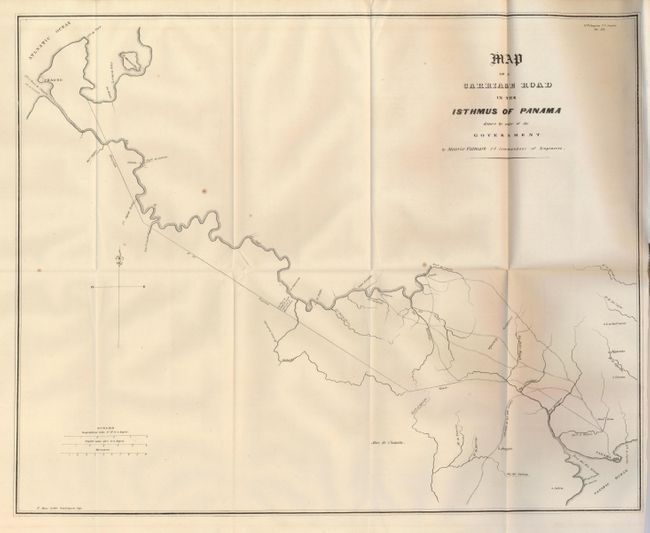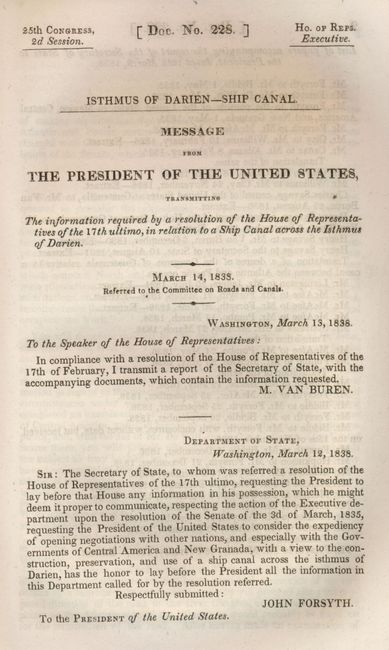Catalog Archive


Auction 123, Lot 369
"Map of a Carriage Road in the Isthmus of Panama Drawn by Order of the Government…", U.S. Government
Subject: Panama
Period: 1838 (published)
Publication: HR Doc. No. 228, 25th Congress, 2d Session
Color: Black & White
Size:
18.5 x 15 inches
47 x 38.1 cm
Download High Resolution Image
(or just click on image to launch the Zoom viewer)
(or just click on image to launch the Zoom viewer)

